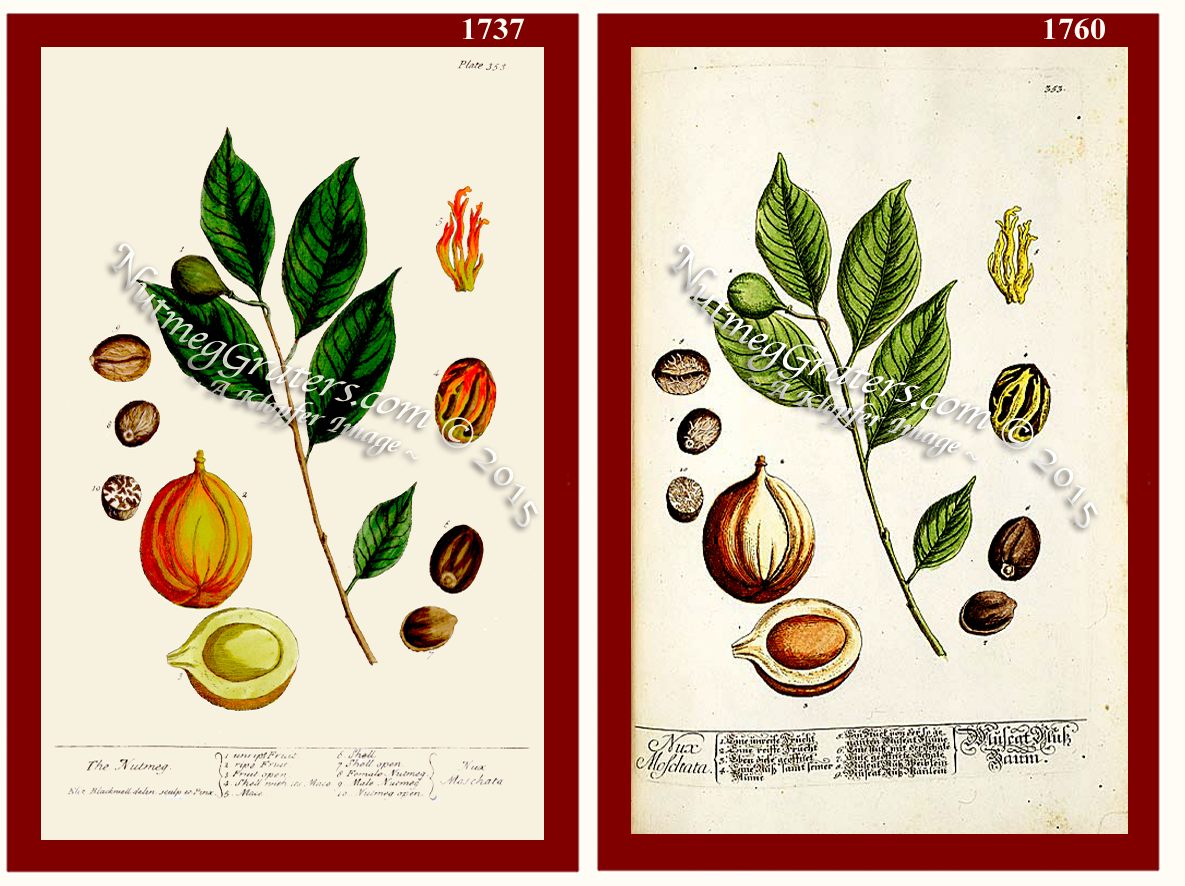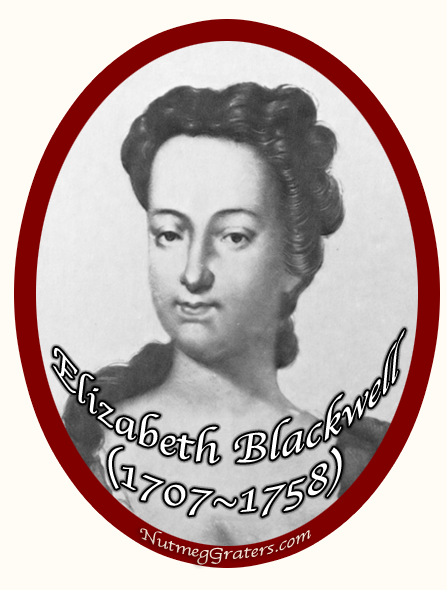NutmegGraters.Com


"The Nutmeg" ~ 1737
|
"Nux Moschata" ~ 1760
|
|---|
 HISTORY: Elizabeth Blachrie (1707~1758) was born in Aberdeen, Scotland. About 1720, Elizabeth married an Alexander Blackwell who practiced medicine as a physician, but without proper training. When this was discovered, the Blackwells escaped to London, where Alexander entered into the publishing business. Again, Alexander did not have the appropriate training. Being fined for his infractions while living extravagantly, Alexander was unable to pay off his obligation, and was sentenced to debtors' prison.
HISTORY: Elizabeth Blachrie (1707~1758) was born in Aberdeen, Scotland. About 1720, Elizabeth married an Alexander Blackwell who practiced medicine as a physician, but without proper training. When this was discovered, the Blackwells escaped to London, where Alexander entered into the publishing business. Again, Alexander did not have the appropriate training. Being fined for his infractions while living extravagantly, Alexander was unable to pay off his obligation, and was sentenced to debtors' prison.
As the daughter of a wealthy merchant, Elizabeth Blackwell had refined instruction in drawing and painting. Consulting with her imprisoned husband and with the masters from the Chelsea Physic Gardens in London to acquire the knowledge pertaining to herbal treatments, Elizabeth drew and then engraved the copper plates for printing of over 500 plant species. It is written that she printed and then, hand colored the engravings by herself for her A Curious Herbal. Her successful marketing of her book allowed Alexander's debts to be paid. In Germany, the second edition was published in Latin, 20 years later as Herbarium Blackwellianum, Selectum, dated 1760.
In 1742, Alexander left Elizabeth when he moved to Sweden, where he was later hanged in 1748. Elizabeth remained in London until her death in 1758. Today, her work is prized for its distinctive art quality.
[KLOPFER article © January 2015]